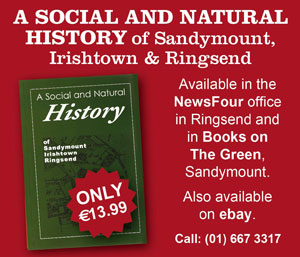
JJ Ledwidge was born in 1877 and grew up at Arran Quay in Dublin.
He won two All-Ireland Gaelic Football Championships, representing Dublin with the Geraldines club in 1898, when he scored two goals in the final, and again in 1899. He then embarked on a long and extremely successful career playing soccer.Ledwidge joined Shelbourne in 1899, and set about making his mark in the ‘Garrison Game’. He was in the Leinster team for their pioneering international matches during the spring of 1899, when they beat London Wanderers 5-2 in Sandymount and again in Leinster’s first game on English soil when they drew 2-2 with Millwall in South London on Easter Monday.
Ledwidge was a rocksteady presence in other big games for Leinster, particularly the regular interprovincial contests with Ulster. These were some of the fiercest fixtures in the early days of Irish football. Then, as now, only the most talented and toughest footballers played in the tear-ups between North and South. JJ was certainly one of the tough ones, and he never let his team down in their battles against Ulster.
For Leinster and Shelbourne, JJ played in the deep midfield position of wing-half. He was sure and capable in defence and attack and photos of the time show a man of intensity and determination, staring with quiet calm into the camera lens. A look like that on the field would surely be enough to make any opponent think twice before trying to come the heavy with him.
In JJ’s early years with Shelbourne, the club was consistently successful, winning the Leinster Senior Cup in 1900, 1901 and 1904. Shelbourne turned professional in 1905 and were accepted into the Irish League, the premier level of football in Ireland. Playing against the biggest clubs in the country began to change Shelbourne into the side that would soon be one of Ireland’s best.
One of the first signs of Shels’ improvement came in the Irish Cup competition, which had always been dominated by the Northern clubs. With JJ on board, Shelbourne beat Belfast’s Glentoran 3-1 in the 1905 semi-final, to reach the Irish Cup final for the first time. Shelbourne lost the final, but the experience gained stood the team in good stead. During the next season Shels beat all-comers, on the way to the cup final again.
At Dalymount Park, on April 28th, 1906, Shels lined out against the legendary Belfast Celtic. The final took place in wild weather conditions of snow, hail, sleet and rain, while the sun shone with blinding brilliance through heavy parting clouds, and a strong north wind buffeted the players as they stepped onto the pitch.
Shelbourne were playing from the start against that wind and used a fast, physical and direct style of football to quickly knock the Belfast men off their game.
According to the Irish Times, the lack of finesse in Shelbourne’s play was “a deliberate and predetermined tactic wherein they adopted the rushed style which has so often worked against the Northerner.” And the tactics worked again against Celtic.
With JJ marshalling the midfield, Shels attacked relentlessly and, after 25 minutes, their forward Owens got clear to score the opening goal. The crowd went wild, surging joyfully against the perimeter fence which gave way and supporters spilled onto the pitch, throwing their hats and sticks high into the air in celebration.
When the spectators were at length corralled back into the stands, the entire scene of delighted mayhem happened all over again, when Owens scored another goal towards the end of the first half to give Shelbourne a 2-0 lead.
In the second half, JJ and his teammates closed ranks and stood against the Belfast pressure until, at long last, the final whistle sounded, and Shelbourne could celebrate having wrested the cup from northern hands.
No one who saw it would ever forget that day in 1906 nor the night that followed, when the victorious scarlet-shirted Shelbourne players raised the cup and brought it home, south for the first time ever.
They paraded with it through the streets of Ringsend and Sandymount, where the night was brightened by bonfires and burning tar barrels, lit along the way to celebrate the great victory. The flames glinted in the curved silver of the cup as it was borne along the route, leaving all who saw it with indelible memories to be passed down and down throughout the years from one generation of Shelbourne supporters to the next.
Shortly after lifting the cup, JJ won his first international caps for Ireland, against Scotland and Wales in March and April of 1906. Undoubtedly he should have been picked in the Irish side long before then, but selection for the Irish team had always been heavily biased in favour of Northern players. He was ignored during the prime years of his career and won no more than the two caps
JJ continued as an important player for Shelbourne as the team made it back to the Irish Cup final in 1907, and 1908, which was the fourth appearance in a final by the midfield ace. He was 32 years old, and nearing the end by then. JJ helped the Reds win two more Leinster Senior Cups, in 1908 and 1909, before moving to play St James’ Gate for a season.
After JJ retired from football, he worked with the Ordnance Survey and Land Commission office. Of course he never could completely shook off his sporting fever, and for years he played for Clontarf Cricket Club as left-arm quick bowler and fielder in the slip cordon.
Although more than a century has passed since JJ’s defining deeds on the football field, he is still revered and remembered for the great player he was. Here in Shelbourne country, JJ the quiet champion will always live on.
by Gavan Bergin



